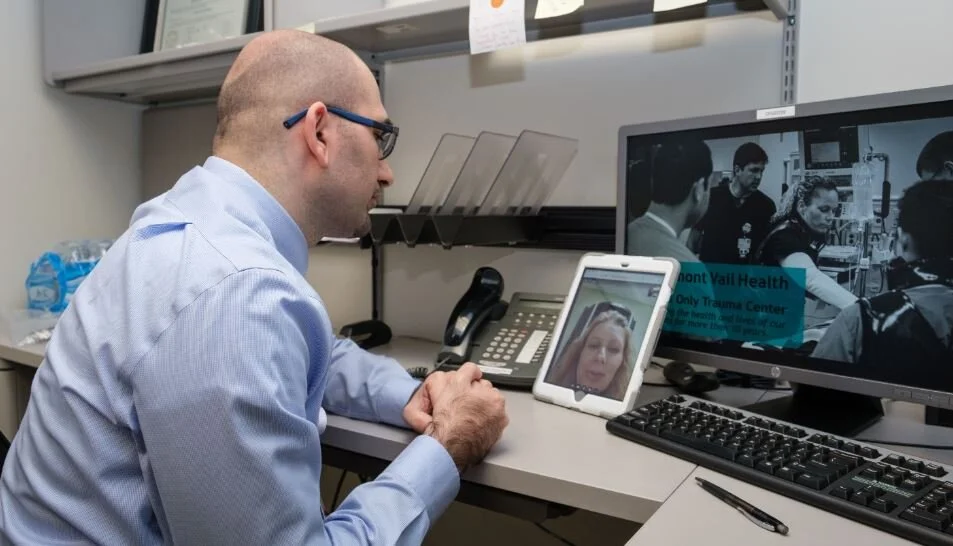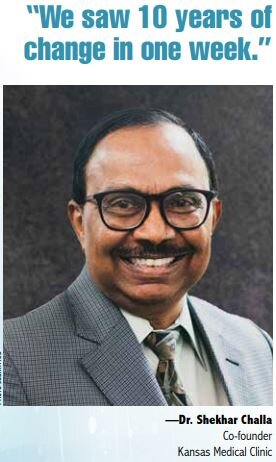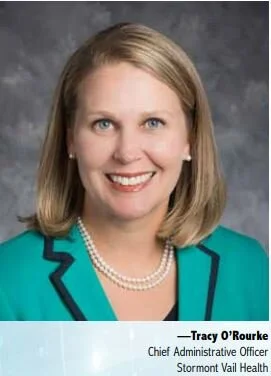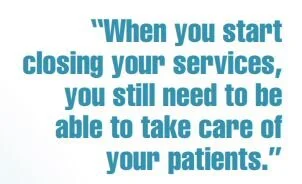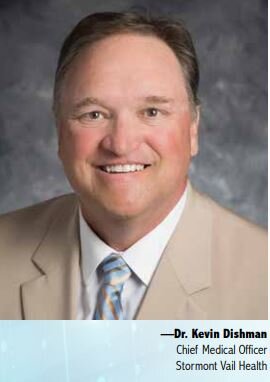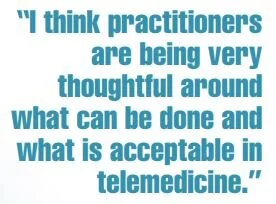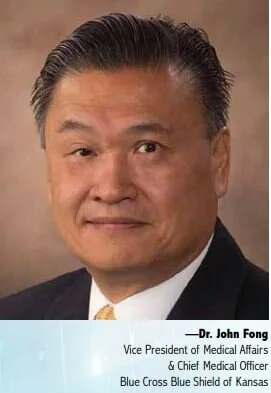Telemedicine: The New Normal?
Sometimes recurring events can be to the detriment of the human race. Nothing serves as a better reminder of this than the current global health crisis. While virtually no one alive today has experienced anything like the COVID-19 pandemic, this virulent outbreak is not the first to sweep across the planet.
But not all repetition of history is bad. Through the COVID-19 pandemic, we have witnessed another historically recurring event: the rise of humankind to meet an incredible challenge.
From schools to restaurants to factories, citizens and businesses across the globe came together to do their part— and make sacrifices—in a heroic, truly unprecedented effort to protect each other and, in particular, those most vulnerable to the novel disease. And while history surely will not forget efforts made across the board, by all groups, it would be hard to argue against the observation that the most herculean efforts have come from the vanguard during this battle: those in healthcare and medicine.
INSTANT TRANSFORMATION
“We saw 10 years of change in one week,” said Dr. Shekhar Challa, as he succinctly characterized what the medical field as a whole experienced this past March.
As co-founder and principal investigator of Kansas Medical Clinic, Dr. Challa had a front-row seat to the transformative change COVID-19 forced upon the medical community.
“Within two weeks of COVID starting [mid-March in the United States], around 27 percent of our KMC patients were being contacted via telehealth. It’s a testament to how adaptable we were,” Challa said. “If you woke me up in my sleep and asked me if I had even dreamed of this, I would have said ‘no way—there’s no way we can go from 0 to 27 percent in two weeks.’”
An expert in gastrointestinal medicine and liver disease, Challa is both a care provider and a researcher in the field. One major element of his work is providing clinical trials to patients who have, or suspect they have, some degree of fatty liver disease. In many cases, he, his partner Dr. Datti and their team provide treatment to patients who otherwise would have no recourse, whether it be due to the severity or lack of approved treatment for their disease. Needless to say, despite the wrench COVID-19 threw into the medical system, it was imperative that Challa and the KMC research team continue their work—including clinical trials for pharma titans such as Allergan, Gilead and Pfizer.
“We believe in providing patients with hope,” explained Susie Roeder, lead study coordinator for KMC research.
Because the work done by Challa, Roeder and their team often involve those with no other viable options, who may even be in the end stages of a disease, the swift move to televisits, a secure way for patients to connect to their doctor remotely, via video and an audio connection either with a smartphone or a computer, made a life-and-death difference for some. As time goes on, the team is hoping for an increased utilization of televisits, in order to provide access and early detection to those who are most at risk. Many of those patients who may not have made a long-distance trip to see a KMC provider in the past, may perhaps be more inclined to pay them a “televisit,” now that the method has been proven as viable.
TRANSITIONING MORE SERVICES
Not far from Dr. Challa’s office stands an institution that has been on the front line of the pandemic from day one: Stormont Vail Health. Two of the institution’s leaders, Tracy O’Rourke, chief administrative officer and Dr. Kevin Dishman, chief medical officer, have a unique vantage point from which to witness the change brought about by the pandemic.
While the hospital had already been using telemedicine in a variety of ways, when COVID-19 started to enter into the community, Stormont Vail started to transition more services, close down elective procedures, and make efforts to protect patients and staff.
“When you start closing your services, you still need to be able to take care of your patients,” O’Rourke said. “While telemedicine had been on our radar for outreach services to rural communities and on-demand e-visits, when COVID came in, it gave us an opportunity to accelerate our adoption of telemedicine throughout or clinic practice.”
The hospital went from conducting a handful of e-visits before COVID-19, to conducting more than 33,000 televisits since March 18.
THE NEW NORMAL?
The providers and patients of Stormont Vail were quick to adopt telemedicine practices as a response to the outbreak. From O’Rourke’s point of view, however, the use of telemedicine very likely could be part of the ‘new normal’ so often mentioned in the media.
“Telemedicine is an important healthcare delivery component of the future,” she said. “The use of telemedicine visits allows us to meet patients where they are.”
Dishman highlighted the convenience factor of telemedicine as a major selling point from the patient’s standpoint.
“The radical success of the personal cellphone tells us that people want that connectivity,” Dishman said. “They want that instantaneous ability to reach out and obtain the information that they need. All we really needed was an impetus for that to happen in the medical community, and COVID-19 led us to that.”
And while patients can benefit from this shift to remote healthcare, this sudden change provided some benefits to the healthcare providers as well.
“Some of the feedback we get from our patients is that being able to see a physician or care provider in their home reduces the stress and anxiety of coming into a clinic or office,” O’Rourke added. “From a physician’s perspective, being able to speak to and evaluate a patient in their home actually gives the provider greater insight into the challenges that are going on in that person’s environment.”
As for the future of medicine, Dishman sees 2020 as a pivotal moment in the field’s long and winding history.
“For the first time, we have physicians and providers who are comfortable with the modality of telemedicine and we are seeing consumers who are choosing this,” he said. “As we focus on choice, patient experience and provider experience, I think telemedicine is going to be one of the aspects we look back on and see as a huge turning point in what consumers and providers expect in terms of delivery of care.”
TELEMEDICINE INVESTMENT
Looking forward, O’Rourke says telemedicine will likely continue to grow, and with that growth comes necessary investment. As healthcare providers increase their investment in this emerging delivery system, she hopes that the industry’s partners and insurance providers will invest as well.
According to Dr. John Fong, vice president of medical affairs and chief medical officer for Blue Cross Blue Shield of Kansas, that partnership and future investment is likely inevitable.
“What we as a healthcare plan provider have done is focus on maintaining accessibility and availability to our policyholders, in terms of necessary care,” Fong said. “As far as how medicine will be practiced in the future, there will be many changes and lessons learned that drive those changes as we move forward.”
While the future may seem more unclear now than ever before, at least in recent history, Fong says he believes the frequency of telemedicine use will be greater moving forward.
“We see from both our policyholders and many of our employer sponsors that they are committed to access and convenience, and telemedicine does offer that, especially during this pandemic. It creates a safer environment for both patient and provider,” Fong said.
While most people agree that convenience is important, it certainly isn’t everything.
“We must also be mindful of the outcomes of the healthcare delivery,” Fong continued. “Not all services can be delivered in a televisit format. We want to make sure the quality of care received by an individual or policyholder using telemedicine is satisfactory, appropriate and meets their expectations.”
In 2019, the State of Kansas passed legislation laying out a framework to establish a standard of care that telemedicine must meet to be considered acceptable. Fong points out that BCBS and many of its healthcare provider partners have gone far above and beyond the minimum standards laid out by that legislation.
“I think practitioners are being very thoughtful around what can be done and what is acceptable in telemedicine,” Fong said.
COVID-19 is still a concern and the final outcome is still an unknown. That said, the agility and adoption of new technology and procedures by the medical community— patients, providers and policy creators alike— bodes well. With a proof-of-concept for widespread telemedicine now in place, some political and social barriers have been lifted, clearing the way for advancements in the future of medicine.
TELEMEDICINE ACCELERATION
“I think what we’re likely to see is an acceleration of the incorporation of telemedicine into the delivery model by providers. Even today, there’s already a lot of technology that exists for telemedicine,” Fong said. “Advanced telemedicine platforms have the abilities such that biometric measurements, like blood pressure, can be incorporated into a telemedicine visit. I think we’ll see an acceleration of those techniques being used in telemedicine, as well as innovation from the standpoint of the oral and mental healthcare industries.”
If the speed with which the medical community was able to adapt to necessary changes in a matter of weeks is any indication, then the advances in medicine we may see over a period of actual years will truly be something spectacular. The COVID-19 pandemic will be remembered as a global tragedy, but if it is indeed the impetus to jumpstart innovations in healthcare and medicine, then it very well may also be remembered as one of the most defining moments in human history. TK


